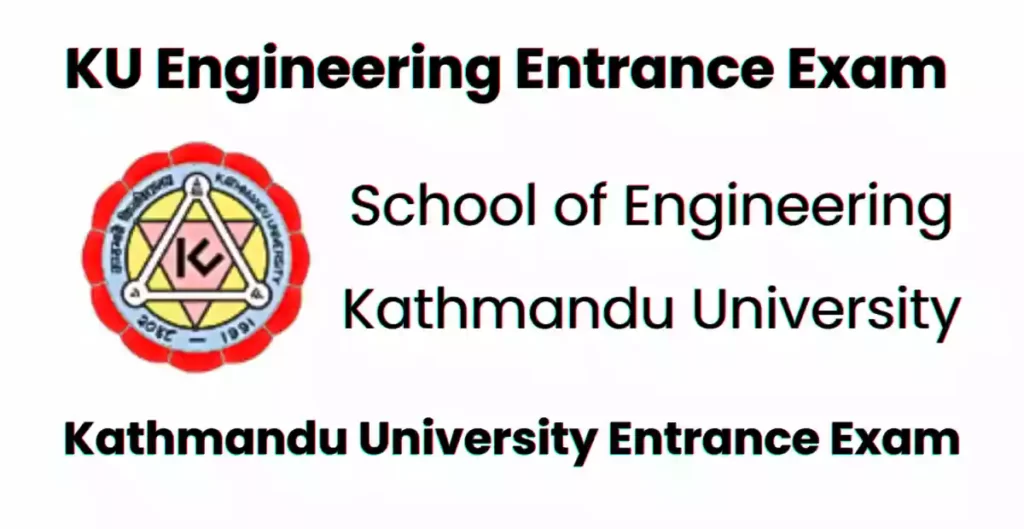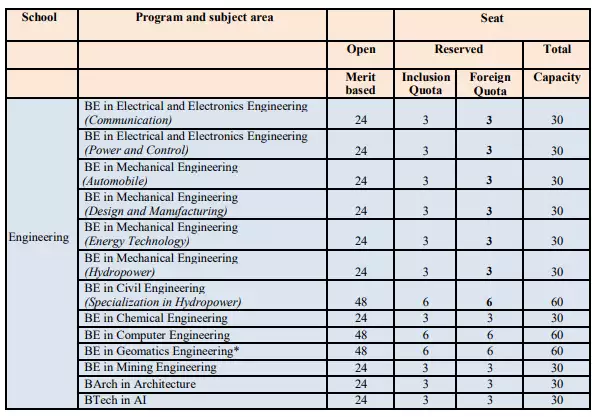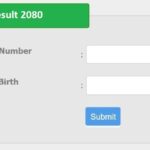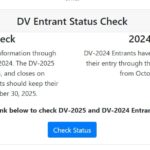KU Engineering Entrance 2023: KU Engineering Entrance is a highly competitive, national-level engineering Computer Based Test (CBT) entrance examination conducted by the School of Engineering, Kathmandu University (KU) for admission to undergraduate engineering programs in Nepal. Aspiring engineering students from all over the country compete for a limited number of seats, making KU Engineering Entrance a challenging and pivotal milestone in their academic journey. In this article, we have provided complete information about the KU Engineering Entrance 2023, including the answer key, result, eligibility, application form, cut-off, admission exam pattern, syllabus, and other details.
KU Engineering Entrance 2023
| Name of Exam | KU Engineering Entrance 2023 2080 |
| Full-Form | Kathmandu University Engineering Entrance Examination |
| Exam Organizing Body | School of Engineering, Kathmandu University (KU) |
| Level of Exam | National |
| Type of Exam | Engineering entrance exam |
| Total Number of Questions | 120 MCQ |
| Exam Date | Bhadra 2080 Expected |
| Exam Duration | 2 Hours |
| Total Marks | 140 |
| Courses in which admission is through KU | Various Engineering Programs |
| Colleges in which admission is through KU | All Engineering Colleges in Nepal |
| Mode of Exam | Computer Based Test (CBT) |
| Official Website | soe.ku.edu.np |
KU Engineering Entrance Exam 2023 Dates
Given below is the official exam schedule of the KU Engineering Entrance Examination:
KU Engineering Entrance Date 2023:
| Event | Dates |
| Notice Release Date | 24th July 2023 |
| Start date to submit the application form | 25 July 2023 |
| Fee submission on the last date | 8 August 2023 |
| Application Form Filling and Payment Deadline | 9 August 2023 |
| KU Engineering Entrance Admit Card | Announced on 10th August 2023 |
| KU KUCAT CBT Entrance Exam Date | To be announced soon |
| KU Aptitude Test For BTech Exam | To be announced soon |
| Result Declaration | To be announced soon |
| Merit List Release Date | To be Announced Soon |
| Admission Process Date | To be announced soon |

Eligibility Criteria for the KU Engineering Entrance Exam 2023
To pursue a career in the diverse and critical field of engineering, aspiring students need to meet specific educational qualifications. The qualifications vary depending on the program they wish to enroll in, such as B.E., B.Sc. Eng., and B.Arch. Below are the required qualifications for various engineering programs:
- Students completing +2 from the National Examination Board (NEB) must have passed with either PCM (Physics, Chemistry, and Mathematics) or PMCs (Physics, Mathematics, and Computer Science) in both XI and XII.
- Candidates who have passed all courses of grade XI and are awaiting the Grade Increment Exam of grade XII can be provisionally admitted if they score the pass marks in the KUCAT-CBT 2023 entrance exam. Specific rules and details regarding provisional admission will be announced during the admission offer call.
- Candidates with +2 equivalent GCSE A-Level qualifications should have completed at least 3 courses at Advanced Level (A level) and 1 at AS level. The course combination of PCM or PMCs is applicable based on the specific program requirements. If a percentage uniform mark (PUM) criteria are provided, then an aggregate of 50% in percentage scale will be applicable. If PUM is not provided, a Grade D in PCM/PMCs will be considered.
- For International Baccalaureate (IB) Diploma students, a minimum of 6 courses, including either PCM or PMCs, is required. The course combination of PCM or PMCs is applicable based on the specific program. Students must have a final IB grade of 3 in each course with an aggregate of 24.
- Candidates who have completed +2 equivalents with foreign educational boards must submit the marks equivalent to grades from the equivalence authority of KU at the time of admission.
- CTEVT diploma holders (3 years of education after SLC/SEE) may apply in the related discipline corresponding to their diploma field of study. The eligibility requirements are the same as the percentage criteria for NEB +2 graduates.

How to Apply for KU Engineering Entrance 2023 soe.ku.edu.np
Before filling out the KU Engineering Entrance application, applicants are required to make a payment as they need a voucher or transaction number during the application process. Once the payment is made, candidates can proceed with the KU Engineering Entrance application 2080 by following these steps:
- Visit the official website: http://apply.ku.edu.np/cbt.
- Register with your name, email, and password.
- Check your email for the confirmation link and confirmation code.
- Click on the confirmation link and enter the confirmation code to proceed with the online application.
- Use the provided login credentials to access the online application system.
- Fill in your personal and academic information.
- Select your desired program and subject area. Please note that you can only choose ONE subject area.
- Upload the required documents following the given document format guidelines (specified in the article).
- You can save and edit the information filled in earlier sections at any time. However, once you upload the documents, provide payment evidence, and submit the form, you won’t be able to make further changes.
- Ensure all information is accurate and review the declaration before submission.
- In case of any confusion or if you encounter difficulties completing the online form, you can email your queries to [email protected]. Please be patient as it may take some time to receive a reply due to the high volume of queries.
- Make sure to submit the completed online application form before the specified deadline.
- Once your form is fully submitted, you will receive an email titled “Submission of Complete Application” confirming your successful application.
KU Engineering Entrance 2023 Application Fee
Application processing fee can be paid through Digital Wallet and Bank. The application fee payable for different categories is:
| Category | Application Fee |
| For All Category | NPR 2000/- |
Payment of Application Fee for KU Engineering Entrance Exam via Bank and Digital Wallet
To pay the application fee for KUCAT-CBT 2080, you have the option to use eSewa, Khalti, or bank transfer. Here’s a step-by-step guide for each method:
a. Payment through eSewa:
- Open the eSewa App and log in (You can also use www.esewa.com.np).
- Click on “Bank Transfer.”
- Fill in the required details:
- Destination Bank: NEPAL INVESTMENT MEGA BANK LTD.
- Transfer From: Select Account Number
- Receiver bank account number: 00501030255547
- Receiver account holder name: KU-SCHOOL OF ENGINEERING
- Amount to transfer: 2000
- Purpose: Bill Sharing
- Remarks: Entrance Fee 2023
- Click on “PROCEED.”
- Click on “CONFIRM.”
- Provide your PASSWORD/MPIN or use Fingerprint for the transfer.
- Take a screenshot of the payment and upload it in the application form.
- You can use the same information to pay the application fee through other digital wallets.
b. Payment through Khalti (Website):
- Open khalti.com.
- Log in to your Khalti account.
- Select “KU Entrance (SOE)” under Recently Added Services.
- Choose “Entrance Fee” and click Next.
- Fill in the required details and in the remarks section, mention “KUCAT CBT-2023.”
c. Payment at the Bank (for Nepal and India):
Bank Name: Nepal Investment Mega Bank Ltd.
Bank Address: Banepa, Kavre, Nepal
Swift Code: NIBLNPKT
Account Name: KU-SCHOOL OF ENGINEERING
Account Number: 00501030255547
- Visit any branch of Nepal Investment Mega Bank and deposit NRs 2000/- in the account name “KU-SCHOOL OF ENGINEERING” (account number 00501030255547).
- Ensure that the applicant’s name is indicated in the voucher.
- Take a clear picture of the voucher and upload it in the application form.
d. Provision for Foreign Students:
Bank Name: Nepal Investment Bank Ltd.
Bank Address: Banepa, Kavre, Nepal
Swift Code: NIBLNPKT
Account Name: Kathmandu University
Account Number: 005 05010 2500 30 (USD)
- Visit any international partner bank or fund transfer portal and deposit the equivalent amount of NRs 2000/. (For the exchange rate, use the following link: https://www.nrb.org.np).
- Ensure that the applicant’s name is indicated on the voucher (receipt).
- Take a clear picture of the voucher (receipt) and upload it in the application form.
KU Engineering Entrance 2080 Eligibility Criteria
Candidates must check complete details related to KU Engineering Entrance Eligibility Criteria from the below section:
Nationality: Nepalese Nationals and Foreign Nationals candidates are eligible to apply.
Educational Qualification: Candidates must have a 12th or equivalent certificate from a recognized board, with a C grade in the final in Physics, Chemistry, and Mathematics as core subjects.
Number of Attempts: There is no attempt limit for the KU Engineering Entrance 2023 exam.
Foreign Nationals: Students who have been educated abroad and are planning to take admitted to engineering colleges in Nepal should have passed their 12th class with Physics, Chemistry, and Mathematics subjects.
KU Engineering Entrance Reservation 2023
Provisions for seat reservations in the KU Engineering Entrance examination have been made to ensure opportunities for candidates belonging to the reserved categories. Applicants applying for admission through any of the mentioned quotas, including open merit and Kathmandu University reserved quota, are required to be prepared to submit attested copies or originals (as per further instructions) of the necessary documents within a specified timeframe
Out of the total scholarship seats available, a certain percentage is allocated for candidates belonging to various reserved categories, including ethnic minorities, disadvantaged communities, and backward areas.
According to existing MoU between Kathmandu University and LMTC, the selection criteria with scholarships category and quota, which are available for BE in Geomatics Engineering is listed below:
| S.N. | Quota Group | Seat | Scholarships from LMTC |
| 1 | Kathmandu University Reserved Quota | 6 | NA |
| 2 | GoN Employees, Civil Service, Engineering Service, Survey Group | 3 | 100% |
| 3 | Provincial Inclusive Quota (3 from each province) Female-1 Adibasi Janjati/Dalit/Madhesi-1 Backward region/Economically deprived-1 | 21 | 35% |
| 4 | Provincial Open Merit (3 from each province) | 21 | NA |
| 5 | Open Merit | 9 | NA |
| Total Intake Students | 60 |
Based on MoU and execution procedure, the details of each category and the necessary documents needed to verify the applicability of each quotas is listed below:
| Scholarship Category | No | No Required Document as Proof of Scholarship Category |
| Nepal Government Employee Group (100%) Engineering Services, Survey Group | 3 | – Letter from related District Administration Office/ Dalit Commission indicating the candidate is Adibasi Janjati/ Dalit/ Madhesi – Copy of citizenship certificate – +2 or equivalent transcript and certificate |
| Provincial Scholarship Group (Female) | 1 | – Copy of citizenship certificate – +2 or equivalent transcript and certificate |
| Provincial Scholarship Group (Adibasi Janjati/ Dalit/ Madhesi) | 1 | – Letter from related District Administration Office/ Dalit Commission indicating candidate is Adibasi Janjati/ Dalit/ Madhesi – Copy of citizenship certificate – +2 or equivalent transcript and certificate |
| Provincial Scholarship Group (Backward region/ Economically Deprived) | 1 | – Recommendation from the local government indicating candidate is from backward region as listed in Nijamati Sewa Ain and an economically deprived group – Transcript and certificate of SEE and +2 indicating candidate studied from other school are economically deprived with supporting letter from the school showing he/she studied in economically deprived quota or under scholarship |
| Provincial Open Merit | 21 | – Copy of citizenship certificate – +2 or equivalent transcript and certificate |
KU Engineering Entrance Exam Admit Card 2023
The admit card has been released on 4th March 2023 through online mode. The admit card contains details such as the KU Engineering Entrance exam date, exam center, reporting time, etc. Candidates should keep a printout of the KU admit card for further use. Candidates should carry their admit card on the day of the KU Engineering Entrance examination, as no candidates will be allowed to enter the examination hall. Candidates need to paste a photograph on the admit card, and one also needs to be carried along with the admit card.
KU Engineering Entrance Exam Centers:
The entrance exam is conducted at three different centers to accommodate candidates from various regions:
| Center 1 | Kathmandu University, Dhulikhel, Kavrepalanchok |
| Center 2 | B. K. V. M. Biratnagar, Morang |
| Center 3 | Nepathya College, Manigram (near Butwal), Rupandehi |
Students have the flexibility to choose any one exam center that suits their convenience during the application process. However, it’s important to note that the Aptitude test for B.Arch (Architecture) will only be conducted at Center 1, following the publication of the CBT merit list. Candidates are strictly not allowed to change their chosen centers after the application deadline.
KU Engineering Entrance 2023 2080 Result
The KU Engineering Entrance result will be announced through online mode. To get KU Engineering Entrance Results, candidates are required to enter their login details like- application number and date of birth.
The result has been prepared according to the revised answer key released by the School of Engineering, Kathmandu University. KU does not prepare the entrance result category-wise. Candidates can take the printout of their KU Engineering Entrance results after the declaration of it. The KU result is considered by most of engineering colleges across the country for admission into bachelor programs in Nepal.
KU Engineering Entrance Cut-Off 2023
The School of Engineering, Kathmandu University (KU) will release the entrance cut off for different categories, including General, Ethnic Minorities, Disadvantaged Communities, and Backward Areas. The cut-off marks have been made available in the form of a PDF file.
The KU Engineering entrance cut-off will be declared simultaneously with the announcement of the examination results. The cut-off scores will be determined based on several factors, including the marks obtained in the KU Engineering Entrance exam, the level of difficulty of the exam, the candidate’s rank, and the availability of seats in respective engineering colleges. Admissions to various engineering colleges will be granted to candidates according to their ranked scores in the KU Engineering Entrance examination. Meeting the cut-off marks becomes a crucial factor in securing a seat in the desired engineering program.
Programs and Subject Areas Offered by Kathmandu University
Kathmandu University provides a diverse array of programs and subject areas, allowing students to explore and excel in various engineering, architecture, and technology disciplines. The following titles represent the subjects and programs offered:
- BE in Electrical and Electronics Engineering (Communication)
- BE in Electrical and Electronics Engineering (Power and Control)
- BE in Mechanical Engineering (Automobile)
- BE in Mechanical Engineering (Design and Manufacturing)
- BE in Mechanical Engineering (Energy Technology)
- BE in Mechanical Engineering (Hydropower)
- BE in Civil Engineering (Specialization in Hydropower)
- BE in Chemical Engineering
- BE in Computer Engineering
- BE in Geomatics Engineering
- BE in Mining Engineering
- BArch in Architecture
- BTech in AI (Artificial Intelligence)
Fee Structure Kathmandu University School of Engineering Collge
| Program | Course Fee (NRs) |
| BE and BTech | 8,50,000 (NRs Eight Lakhs Fifty Thousand Only) |
| BArch | 9,70,000 (NRs Nine Lakhs Seventy Thousand Only) |
| Student From SAARC Nation | 1.5 Times of Normal Fee |
| Students From OTHER Nation | 2 Times of Normal Fee |
KU Engineering Entrance 2023 2080 Exam Pattern
The KUCAT-CBT (Korea University Computer-based Test) is a two-hour examination comprising 120 multiple-choice questions. The test is divided into three parts, each focusing on subjects PCM (Physics, Chemistry, and Mathematics). Each part consists of 40 multiple-choice questions, distributed evenly across the topics mentioned in the syllabi provided at the end of the document.
Here are the details about the KU Exam pattern:
Mode: The exam will be held in offline mode in different centers inside the Kathmandu valley computer method.
Number of Questions: There will be 120 questions from Mathematics, Physics, and Chemistry
Type of Questions: The question will include multiple-choice questions (MCQs).
Duration: The duration of the exam would be 2 hours.
Medium: The KU question paper 2023 will be in the English language.
Section-wise exam pattern of KU 2023 is given below:
| Subjects | Questions |
| Physics | 40 |
| Chemistry | 40 |
| Mathematics | 40 |
KU Engineering Entrance Syllabus 2023
The KUCAT-CBT (Korea University Computer-based Test) is a two-hour examination comprising 120 multiple-choice questions. The test is divided into three parts, each focusing on subjects PCM (Physics, Chemistry, and Mathematics). Each part consists of 40 multiple-choice questions, distributed evenly across the topics mentioned in the syllabi provided at the end of the document.
The questions are categorized into five difficulty levels, ranging from 1 (easiest) to 5 (toughest). The exam starts with a difficulty level 1 question for each part. Based on the candidate’s responses, the difficulty level of subsequent questions is adjusted. Correctly answering a question of a specific difficulty level increases the subsequent question’s difficulty level by 1, while an incorrect answer decreases it by 1. However, correctly answering a difficulty level 5 question or answering a difficulty level 1 question incorrectly does not impact the subsequent question’s difficulty level.
The candidates’ initial score is zero, and they earn points based on the difficulty level of the questions they answer correctly. A question of difficulty level 1 awards 11 points, while each higher difficulty level question adds 2 points more than the previous one (e.g., difficulty level 5 question grants 19 points).
The scoring range of the CBT is from 0 to 2220, with 0 indicating that all questions were attempted and answered incorrectly, and 2220 signifying that all questions were answered correctly. The minimum threshold (PASS MARK) for KUCAT-CBT 2080, required for admission to programs offered by the School of Engineering, is set at 528. Candidates must achieve at least this score to be eligible for admission.
During the test, candidates cannot skip questions or review previous submissions, but they are allowed to switch between subjects (parts) at any time. After completing the test, candidates can view their KUCAT-CBT scores.
. Candidates can check some important topics of the KU Engineering Entrance syllabus from below.
Physics Syllabus KU Entrance Engineering
A. Mechanics
- Physical Quantity
- Kinematics
- Dynamics
- Energy
- Rotational motion
- Gravitation
- Structure and Properties of Matter
- Elasticity
- Viscosity
- Surface tension
B. Heat & Thermodynamics
- Heat and temperature
- Transmission of heat
- Basic assumption of kinetic theory of gases
- Thermodynamics
C. Optics
- Reflection
- Refraction
- Speed of light
- Dispersion of light
- Optical Instrument
- Photometry
- D. Waves
- Wave motion
- Sound
- Electromagnetic waves
E.Electrostatics and D.C. Circuits
- Simple Electrostatic Phenomenon
- Charge flow
- Resistance
- Effect of Current
- Capacitors
F. Magnetic field and current
- Magnetic field
- Force on conductor
- Magnetic materials
- Electromagnetic induction
- Alternating current
G. Modern Physics
- Electron
- Photons
- Electronic
- Atoms
- Nucleus
- Radioactivity
- Elementary particles
Chemistry Syllabus KU Entrance Engineering
A. General And Physical Chemistry:
- Language of Chemistry
- Gaseous State of Matter
- Liquid State of Matter
- Solid State of Matter
- Laws of Stoichiometry
- Avogadro’s Hypothesis and its Important Applications
- Atomic Structure
- Quantum Numbers
- Chemical Bonding
- Oxidation and Reduction
- Periodic Table
- Acids, Bases, and Salts
- Acidimetry and Alkalimetry
- Electrochemistry
- Electrode Potential
- Chemical Kinetics
- Chemical Equilibrium
- Le Chatelier’s Principle
- Chemical Thermodynamics
- Entropy and Spontaneity
B. Inorganic Chemistry:
- Hydrogen, Oxygen, and Nitrogen
- Carbon
- Sulphur and Its Compounds
- Halogens and Halogen Acids
- Introduction to Metals
- Alkali and Alkaline Earth Metals
- Coinage Metals
- Heavy Metals
C. Organic Chemistry:
- Introduction to Organic Chemistry
- Hydrocarbons
- Organic Halogen Compounds
- Alcohols
- Ethers
- Carbonyl Compounds
- Carboxylic Acids
- Amines
- Aromatic Hydrocarbons
- Aniline and Nitrobenzene
- Carbohydrates, Proteins, Nucleic Acids, Lipids
- Polymers, Pesticides, Dyes, and Drugs
Syllabus for Mathematics KU Engineering Entrance
- Representation of Data
- Measures of Location and Spread
- Probability
- Permutation and Combination
- Probability Distributions
- Binomial Distributions
- Expectation and Variance of a random variable
- Normal Distribution
- Surds and indices
- Functions and Graphs
- Quadratics and Inequalities
- Differentiation
- Application of Differentiation
- Sequences
- Binomial Theorem
- Trigonometry
- Extending Differentiation
- Vectors
- Geometric Sequences
- Second Derivative
- Integration
- Volume of revolution
- Polynomial
- The Modulus function
- Exponential and Logarithmic function
- Differentiating Exponential and Logarithmic Functions
- Differentiating Trigonometric Function
- Determinants
- Matrices
- Equation of Straight Lines
- A pair of lines
- System of linear equations
- System of Linear Inequalities and Graphs
- Complex Numbers
- Limits and Continuity
- Coordinate Space
- Plane
- Concept of Sets
- Relation
- Functions
FAQs on KU Engineering Entrance Exam 2023
Will KU Engineering Entrance be there in 2080?
Yes, KU Engineering Entrance 2080 will be conducted by the School of Engineering, Kathmandu University (KU).
Is KU Engineering Entrance conducted twice in 2023?
No, the KU Engineering Entrance exam is conducted once a year; there are no multiple sessions in 2023.
When does KU Engineering Entrance 2023 Admission start?
KU Engineering Entrance 2023 admission is scheduled to commence in October 2023. Candidates can check the admission details for further information.
Is the syllabus reduced for KU Engineering Entrance 2023?
No, the KU Engineering Entrance 2023 syllabus remains unchanged; there are no reductions in the syllabus.
How can I check the KU Engineering entrance result?
To check the KU Engineering Entrance result 2023, candidates can access it through online mode only, and the website to check the KU result 2023 is soe.ku.edu.np.
How to score 90+ marks in KU Engineering Entrance 2023?
Scoring 90+ marks in KU Engineering Entrance 2023 2080 requires thorough exam preparations. Candidates should focus on comprehensive study techniques, practice the previous year’s question papers, and follow effective preparation tips to achieve higher marks in the examination.





